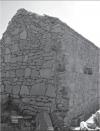Abstract
Construction practices are a fertile field not just to discuss technical issues but also to think about the social world.In this text we propose to consider the constructive dimensions focusing more on the processes of architectural productionthan in the material results. We will use the material emerged in the fieldwork we have been developing since2004 in the town of Susques in the highlands north of Argentina.First we will describe the general characteristics of a constructive logic which relies on the use of earth techniques.On a second point we will reflect on the subjectivity of the different builders in the framework of shared rules. Thenwe will describe how building is established as an everyday practice rather than sporadic, and how the knowledge onthe subject is widely spread in the whole population. Finally, we will cover briefly the different rituals that go throughthe process of building a house to show how technical, social and symbolic are deeply embedded.Apuntes is registered under a Creative Commons Attribution 4.0 International Public License. Thus, this work may be reproduced, distributed, and publicly shared in digital format, as long as the names of the authors and Pontificia Universidad Javeriana are acknowledged. Others are allowed to quote, adapt, transform, auto-archive, republish, and create based on this material, for any purpose (even commercial ones), provided the authorship is duly acknowledged, a link to the original work is provided, and it is specified if changes have been made. Pontificia Universidad Javeriana does not hold the rights of published works and the authors are solely responsible for the contents of their works; they keep the moral, intellectual, privacy, and publicity rights.
Approving the intervention of the work (review, copy-editing, translation, layout) and the following outreach, are granted through an use license and not through an assignment of rights. This means the journal and Pontificia Universidad Javeriana cannot be held responsible for any ethical malpractice by the authors. As a consequence of the protection granted by the use license, the journal is not required to publish recantations or modify information already published, unless the errata stems from the editorial management process. Publishing contents in this journal does not generate royalties for contributors.


